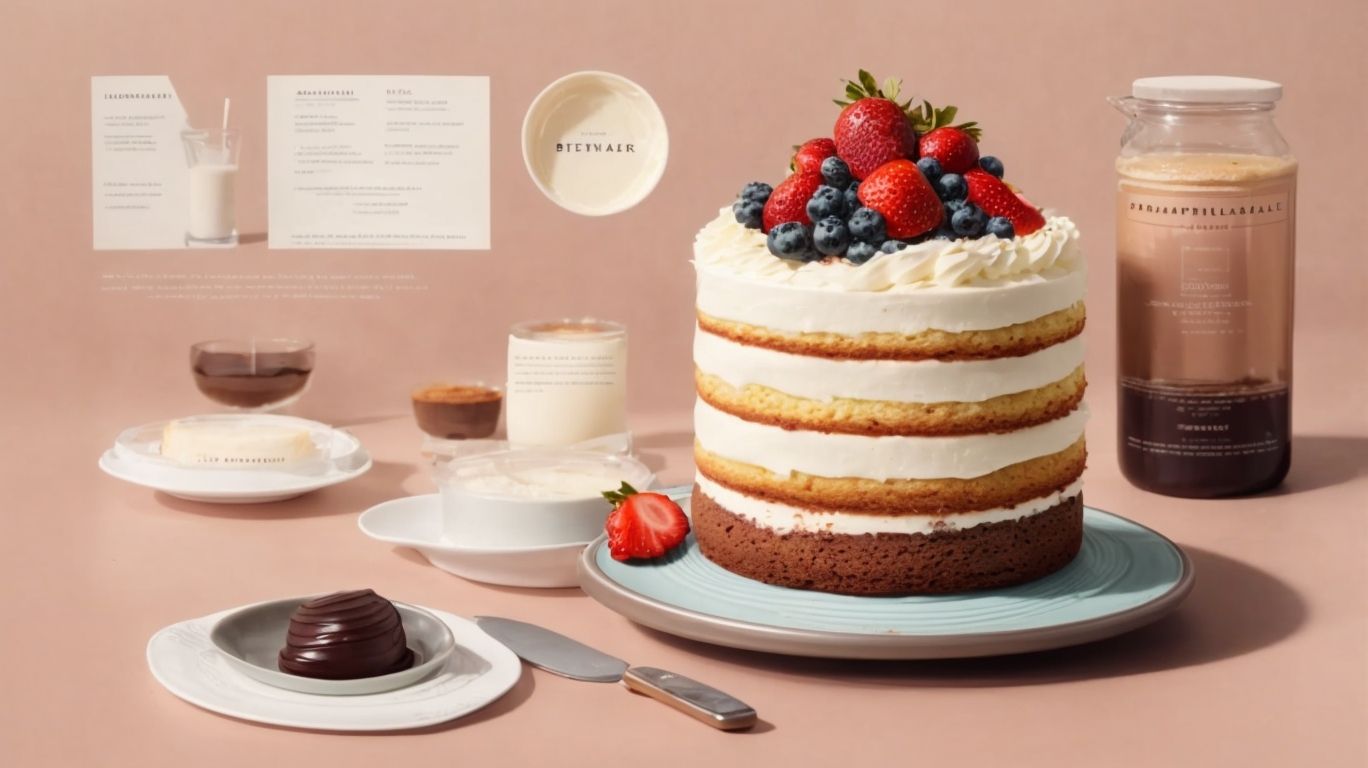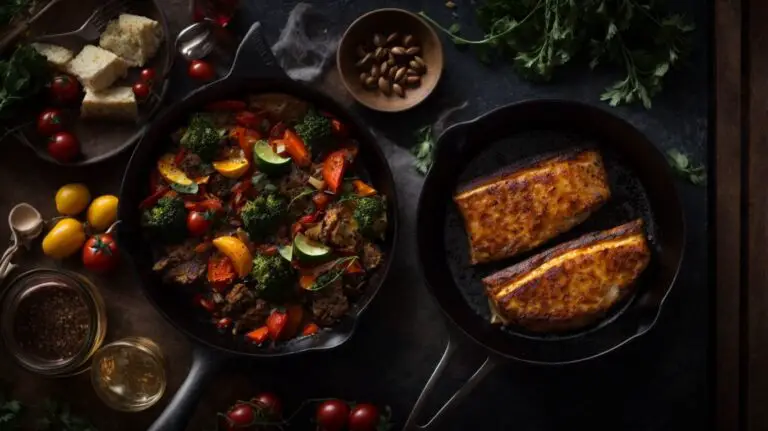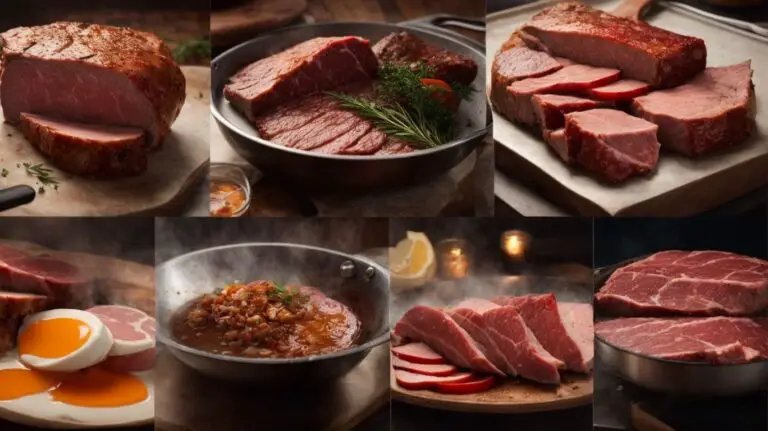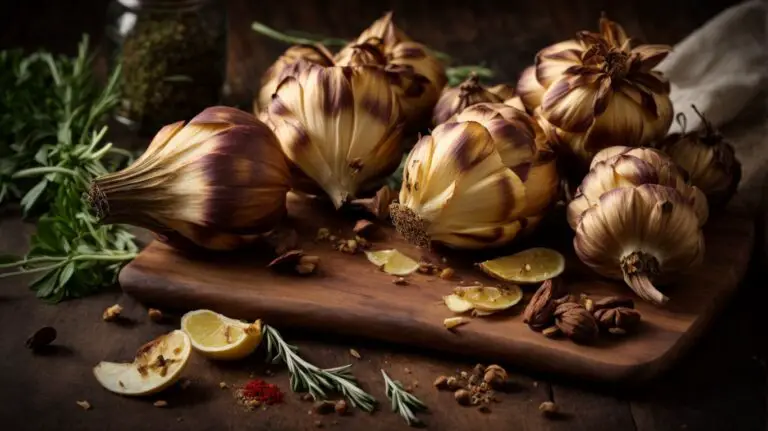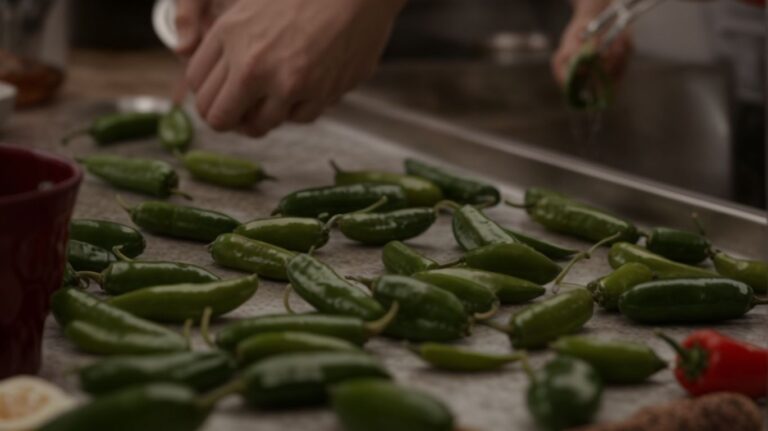How to Cook the Cake?
Are you ready to step into the world of baking and create delicious cakes from scratch?
We will explore the basic ingredients needed for making a cake, the different types of cakes you can bake, essential tools for baking, how to prepare the cake batter, steps for baking the cake, and tips and tricks for achieving the perfect cake.
Whether you’re a beginner or a seasoned baker, this guide will provide you with all the information you need to bake a mouthwatering cake. Let’s get started!
Key Takeaways:
What Are the Basic Ingredients for Making a Cake?
To make a delicious cake, you will need a few basic ingredients that form the foundation of any great recipe.
Butter serves as a fundamental component contributing to the richness and moisture of the cake. It not only brings a velvety texture but also plays a crucial role in enhancing flavor.
Sugar adds sweetness and aids in tenderizing the crumb structure of the cake, while eggs provide structure and stability to hold everything together.
Flour acts as the base, giving the cake its structure, and each type of flour can alter the texture.
Vanilla extract imparts aromatic complexity, enriching the overall taste, and milk offers added moisture for a soft and luscious crumb.
Flour
Flour is a fundamental ingredient in cake baking, providing structure and texture to the final product.
In terms of choosing the right type of flour for your cake recipe, all-purpose flour is a versatile option that works well with most recipes. It strikes a balance between protein content and starch, resulting in a tender crumb. Conversely, cake flour has a lower protein content, yielding a softer and lighter texture in cakes. Whole wheat flour adds a nutty flavor and denser consistency to cakes, perfect for those looking for a healthier alternative.
Measuring flour correctly is crucial for successful baking. Use a spoon to lightly fill the measuring cup and level it off with a flat edge to avoid compacting the flour. Incorporating flour into the batter should be done gently to prevent overmixing, which can result in a tough cake. Sift the flour before adding it to the wet ingredients for a smoother blend.
Sugar
Sugar serves as a sweetening agent in cakes, enhancing flavor and contributing to the desired texture.
In terms of cake baking, the type of sugar used can significantly impact the final outcome. Granulated sugar, known for its versatile nature, is a common choice due to its ability to blend well with other ingredients and create a balanced sweetness. Brown sugar, with its molasses content, adds a rich flavor and moistness to cakes, perfect for creating a tender crumb. Additionally, powdered sugar is essential for frostings and icings, providing a smooth texture while maintaining a stable structure.
Butter
Butter adds richness and moisture to cakes, creating a tender crumb and enhancing the overall flavor profile.
In terms of choosing the right type of butter for your cake recipes, it’s essential to consider the fat content. Unsalted butter is commonly used in baking to give you more control over the salt levels in your recipe.
Make sure to use butter that is ideally at room temperature for easier creaming. For a richer flavor, you might opt for European-style butter, which has a higher butterfat content than regular butter.
Creaming butter with sugar is a crucial step in cake making, as it incorporates air into the mixture, resulting in a fluffy texture and light crumb.
Eggs
Eggs play a crucial role in cake recipes, providing structure, moisture, and richness to the batter.
In terms of baking, eggs act as a binding agent, holding all the ingredients together and creating a smooth, cohesive mixture. Not only do eggs lend a velvety texture to cakes, but they also contribute to the overall volume and lift of the batter, resulting in a light and airy final product.
Ensuring that eggs are at room temperature before adding them to the batter is essential, as cold eggs can prevent proper emulsification and lead to a dense cake. To incorporate eggs effectively, crack them into a separate bowl first to check for freshness and avoid any shell fragments before mixing them into the rest of the ingredients.
Baking Powder
Baking powder is a leavening agent that helps cakes rise and achieve a light, fluffy texture.
Unlike baking soda, which requires an acidic component to activate its leavening properties, baking powder contains both an acid and a base, allowing it to create carbon dioxide gas and lift the batter without needing an additional acidic ingredient. It acts as a convenient all-in-one leavening agent in recipes that don’t already contain an acid.
When using baking powder in a cake recipe, ensure that it is fresh to guarantee optimal rising power. Too much baking powder can result in a bitter taste, so it’s essential to measure accurately according to the recipe instructions.
What Are the Different Types of Cakes?
Cakes come in a variety of types, each offering a unique flavor profile and texture to suit different preferences and occasions.
White cake, known for its light and delicate crumb, is a popular choice for weddings, while birthday cakes often feature vibrant colors and fun decorations to celebrate special occasions.
Chocolate devil’s food cake, with its rich and moist texture, is a decadent treat loved by chocolate enthusiasts, while red velvet cake stands out with its deep red color and subtle cocoa flavor.
German chocolate cake, topped with a coconut-pecan frosting, has a distinct nutty sweetness, ideal for gatherings and parties.
Angel food cake, airy and fluffy, is a light option often served with fresh fruit or whipped cream, perfect for summer desserts.
Sponge Cake
Sponge cake is a light and airy dessert known for its delicate texture and versatility in absorbing flavors.
Characterized by its fine crumb and soft, springy structure, a sponge cake is created by meticulously incorporating air into the batter, resulting in a fluffy and light final product. The key ingredients for a classic sponge cake usually include eggs, flour, sugar, and sometimes vanilla extract. The technique of gently folding in the ingredients helps maintain the cake’s airy consistency. To ensure a moist and tender sponge cake, it’s essential to not overmix the batter, as this can lead to a dense and dry outcome.
Pound Cake
Pound cake is a dense and rich dessert that offers a buttery flavor and tender crumb with a simple yet satisfying taste.
It originated in Europe, evolving over centuries into the beloved treat we know today. The traditional recipe consists of equal parts flour, sugar, butter, and eggs, giving it its signature dense texture and buttery taste. Modern variations often include additional ingredients such as citrus zest, vanilla extract, or sour cream to enhance flavor and moisture.
A well-made pound cake should have a moist interior and a golden crust, achieved through proper mixing techniques and baking at the right temperature. Overmixing can lead to a tough cake, while undermixing may result in an uneven crumb structure.
Angel Food Cake
Angel food cake is a light and fluffy confection made with egg whites, sugar, and flour, resulting in a delicate and ethereal dessert.
Characterized by its tall, airy structure and cloud-like texture, angel food cake stands out for its unique ingredients and preparation methods. Unlike traditional cakes that use butter and egg yolks for richness, angel food cake relies solely on egg whites for its lightness. Incorporating cream of tartar helps stabilize the egg whites, allowing them to reach optimal volume when whipped. Angel food cake also commonly includes vanilla extract for flavor enhancement and a touch of salt to balance the sweetness. To achieve the signature height and fluffiness, the cake is baked in a specialized tube pan without greasing, enabling it to grip onto the sides and rise properly. The slow cooling process upside down prevents the cake from collapsing, resulting in a beautifully risen dessert that practically melts in your mouth.
Red Velvet Cake
Red velvet cake is a visually stunning dessert known for its vibrant red color and subtle cocoa flavor, often paired with a rich cream cheese frosting.
One of the key ingredients that give red velvet cake its distinctive color is cocoa powder, which not only adds a hint of chocolate flavor but also deepens the red hue. Buttermilk plays a crucial role in creating a tender crumb texture, while vinegar enhances the cake’s acidity and brightens the overall flavor profile. The combination of these ingredients results in a moist and flavorful cake that is beloved for its unique taste and appearance.
What Are the Essential Tools for Baking a Cake?
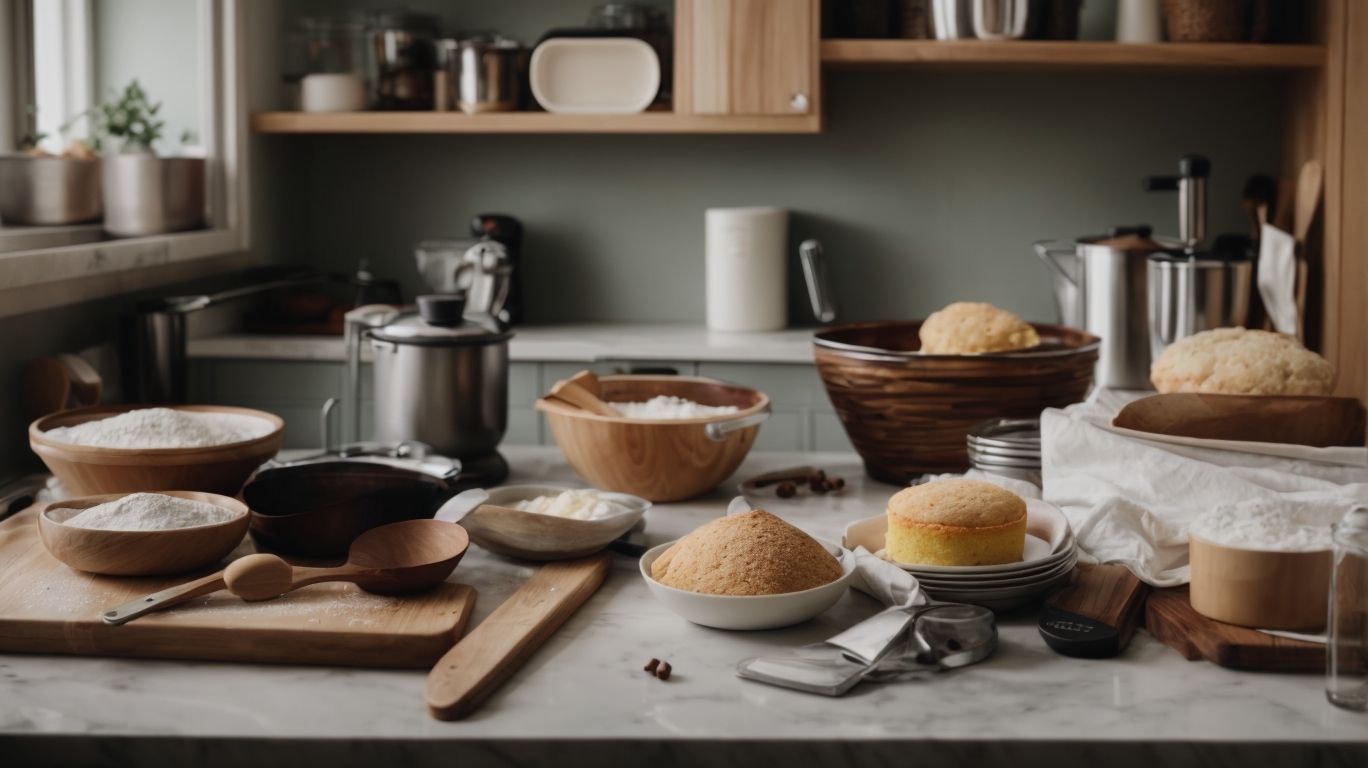
Credits: Poormet.Com – Gabriel Lewis
Along with ingredients, having the right tools is essential for successful cake baking, ensuring your cakes turn out perfectly every time.
In terms of preparing a scrumptious cake, you can’t go wrong with the basics. Mixing bowls are where the magic happens, blending all your ingredients into a harmonious batter. Measuring cups and spoons come to play, ensuring precision in each ingredient you add. An electric mixer makes the process a breeze, whipping up your batter to the ideal consistency and incorporating air for that light, fluffy texture. And don’t forget about the cake pans – they provide the structure for your creation, allowing it to rise and bake evenly for that picture-perfect result.
Mixing Bowls
Mixing bowls are critical tools in cake baking, used for combining ingredients, whisking batters, and creating uniform mixtures.
In terms of baking a perfect cake, the type of mixing bowl you use can significantly impact the outcome. Choosing the right mixing bowl is crucial to ensure your cake batter is mixed thoroughly and evenly. There are various types of mixing bowls available, such as stainless steel, glass, ceramic, and plastic.
- Stainless steel bowls are durable and lightweight, making them a popular choice for everyday baking.
- Glass bowls are heatproof and ideal for mixing ingredients that require temperature control.
- Ceramic bowls are great for retaining cool temperatures, perfect for keeping ingredients chilled.
Measuring Cups and Spoons
Accurate measurements are crucial in cake baking, making measuring cups and spoons essential tools for precision in ingredient quantities.
In terms of baking, the accuracy of ingredients can make or break a recipe. Using the right type of measuring tool ensures that your cakes turn out just right, with the perfect texture and taste. Measuring cups come in various sizes, typically ranging from 1 cup to ¼ cup, allowing you to measure both liquids and dry ingredients.
Measuring spoons, on the other hand, are handy for small amounts, like a pinch of salt or a dash of vanilla extract. They often come in sets, including tablespoons, teaspoons, and fractions of teaspoons, for precise measurements.
To make sure you’re getting the most accurate measurements, always fill the measuring cup or spoon to the brim, then level it off with a straight edge. This technique prevents air pockets and ensures you’re adding the exact amount needed for your recipe.
Electric Mixer
An electric mixer simplifies the process of mixing cake batters, ensuring ingredients are thoroughly combined and aerated for a light and fluffy texture.
In terms of electric mixers, there are two main types to consider: hand mixers and stand mixers.
Hand mixers are compact, easy to use, and perfect for smaller mixing tasks. On the other hand, stand mixers offer more power and stability, making them ideal for heavy-duty mixing and kneading.
Whichever you choose, these appliances come with multiple attachments such as whisk, paddle, and dough hook, catering to various baking needs.
Cake Pans
Choosing the right cake pan is essential for achieving the desired shape and size of your cake, ensuring even baking and easy release.
In terms of cake pans, there are various types to choose from, each serving a unique purpose. The versatile round cake pans are perfect for making layered cakes or simple round cakes. On the other hand, square cake pans are ideal for creating sheet cakes or square-shaped desserts. If you’re looking to add a decorative touch to your cakes, a bundt pan with its distinctive ring shape can be a great option.
Before pouring your cake batter into the pan, it is crucial to properly prepare it to prevent sticking and ensure a pristine cake presentation. Grease the pan generously with butter or cooking spray, then dust it with flour or cocoa powder to create a protective layer that aids in easy cake removal.
How to Prepare the Cake Batter?
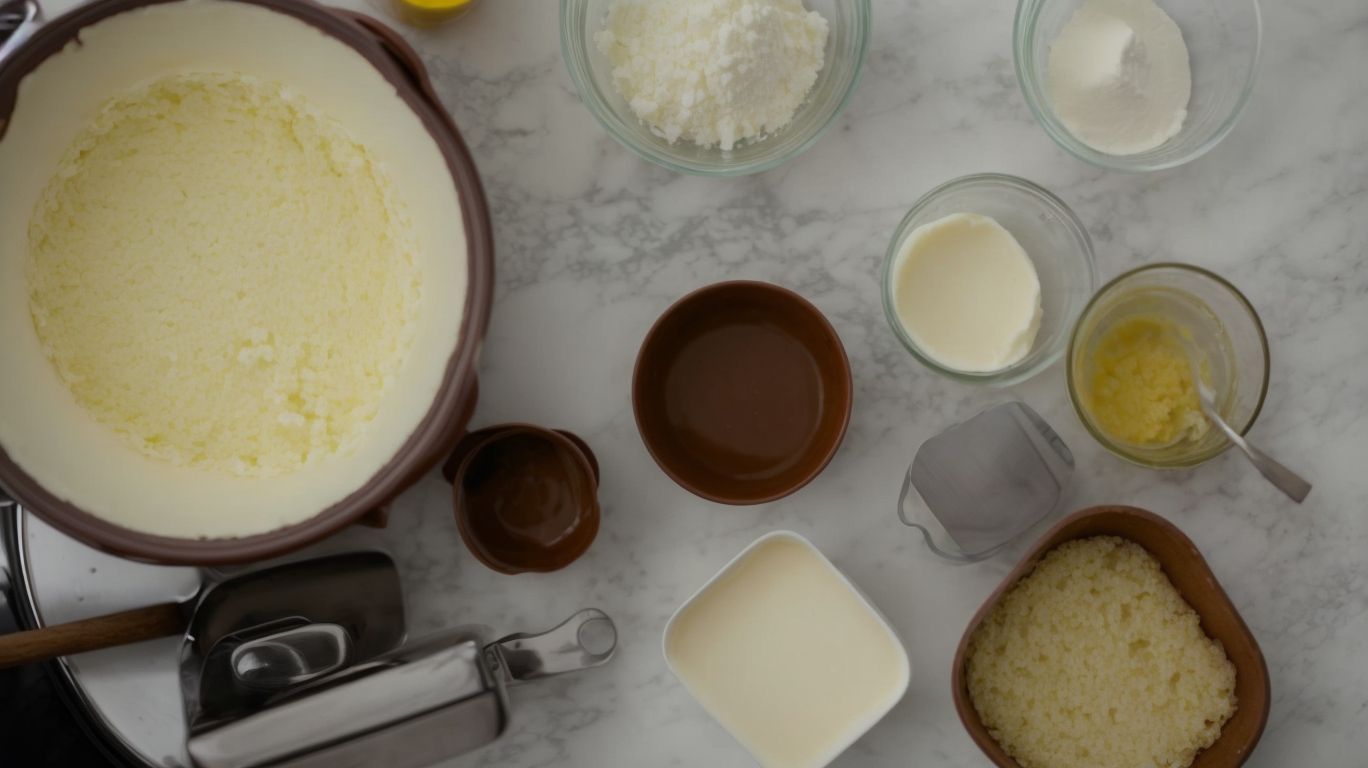
Credits: Poormet.Com – Wayne Nelson
Preparing the perfect cake batter requires precision and technique to ensure a smooth and well-incorporated mixture that will result in a delicious cake.
Begin by gathering all the necessary ingredients such as flour, sugar, eggs, butter, and any additional flavorings. It’s essential to measure each ingredient accurately to maintain the right balance in the batter.
Start by creaming the butter and sugar together until light and fluffy, creating the base for a moist cake. Gradually add the eggs, one at a time, ensuring each is fully incorporated before adding the next. Sift the flour to aerate it and then gently fold it into the wet mixture to avoid overmixing, which could result in a tough cake.
What Are the Steps for Baking the Cake?
Baking a cake involves following a series of steps, from preheating the oven to testing for doneness, to ensure a perfectly baked and moist cake.
After preheating the oven to the recommended temperature, the next crucial step is preparing the cake pans. Grease the pans thoroughly with butter or cooking spray and line them with parchment paper to prevent the cake from sticking.
Once the pans are ready, carefully pour the cake batter into each pan, ensuring an even distribution. Place the pans in the center of the oven to ensure even baking.
It’s essential to monitor the baking time closely. Use a timer and avoid opening the oven door too frequently as it may cause the cake to collapse.
To check for doneness, insert a clean toothpick into the center of the cake. If it comes out clean with no batter sticking to it, the cake is ready.
How to Decorate and Frost the Cake?
Decorating and frosting a cake is a creative process that adds visual appeal and enhances the flavor profile of the dessert, turning a simple cake into a work of art.
In terms of frosting a cake, there are various techniques you can use to achieve different effects. Swirls create a classic and elegant look, while piping allows for intricate designs and patterns. Experiment with different nozzles and piping bags to achieve the desired textures and shapes.
To take your cake decoration to the next level, consider incorporating decorative elements like fondant flowers, chocolate ganache drizzles, or edible glitter. These can add a touch of sophistication and creativity to your creation.
Tips and Tricks for Baking the Perfect Cake
Mastering the art of baking the perfect cake requires practice, patience, and attention to detail, but with the right tips and tricks, even novice home cooks can achieve professional-quality results.
To ensure your cake is moist and flavorful, try adding a tablespoon of sour cream or Greek yogurt to the batter. These ingredients add richness and depth to the flavor profile.
Another useful tip is to always use room temperature ingredients when baking. This allows for even mixing and better incorporation of air, resulting in a lighter texture.
When decorating cakes, invest in quality tools such as offset spatulas and piping bags to achieve smooth finishes and intricate designs.
Conclusion and Final Thoughts
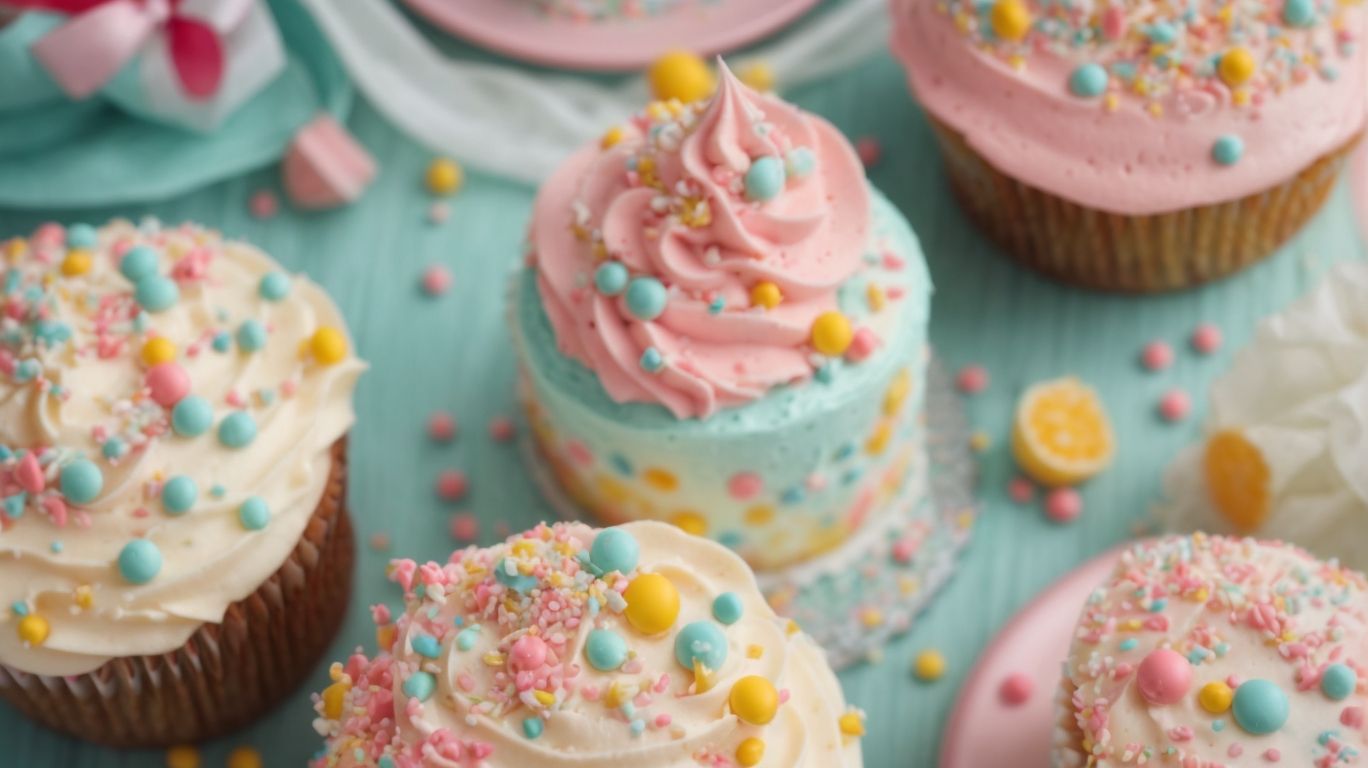
Credits: Poormet.Com – Zachary Carter
Cake baking is a delightful culinary experience that allows you to express your creativity and share delicious treats with loved ones on special occasions.
Baking a cake not only brings people together but also creates lasting memories that are intertwined with the sweetness of the dessert. The process of mixing ingredients, watching the cake rise in the oven, and finally decorating it with colorful frostings and toppings is a labor of love that culminates in a masterpiece ready to be enjoyed.
Whether it’s a birthday, anniversary, or any other milestone, a beautifully crafted cake adds that extra touch of celebration and joy to the occasion. As the candles are lit and the cake is presented, the heartwarming smiles and shared happiness exemplify the magic of a well-made cake.
Frequently Asked Questions
What are the essential ingredients needed to cook a cake?
To cook a cake, you will need flour, sugar, eggs, butter or oil, baking powder, and flavoring like vanilla extract. You can also add milk or other liquid ingredients, depending on the recipe.
What is the best way to mix the batter for a cake?
The best way to mix the batter for a cake is to start by creaming the butter and sugar together until light and fluffy. Then, add in the eggs one at a time, followed by the dry ingredients. Mix until just combined to avoid overmixing, which can result in a dense and tough cake.
Can I substitute the all-purpose flour with other types of flour?
Yes, you can substitute all-purpose flour with other types of flour, such as cake flour for a lighter texture or whole wheat flour for a nuttier flavor. However, keep in mind that different flours have different properties, so the result may not be the same as using all-purpose flour.
How do I prevent my cake from sticking to the pan?
To prevent your cake from sticking to the pan, make sure to properly grease and flour the pan before pouring in the batter. You can also line the bottom of the pan with parchment paper for extra insurance. Allow the cake to cool for a few minutes before removing it from the pan.
What is the recommended oven temperature for baking a cake?
The recommended oven temperature for baking a cake is usually between 350-375 degrees Fahrenheit. However, this may vary depending on the type of cake and the recipe. Always refer to the specific recipe for the correct oven temperature.
How can I tell if my cake is fully cooked?
The best way to tell if a cake is fully cooked is by inserting a toothpick or skewer into the center of the cake. If it comes out clean, without any batter or crumbs, then the cake is done. You can also gently press on the top of the cake, and if it springs back, it’s most likely fully cooked.

